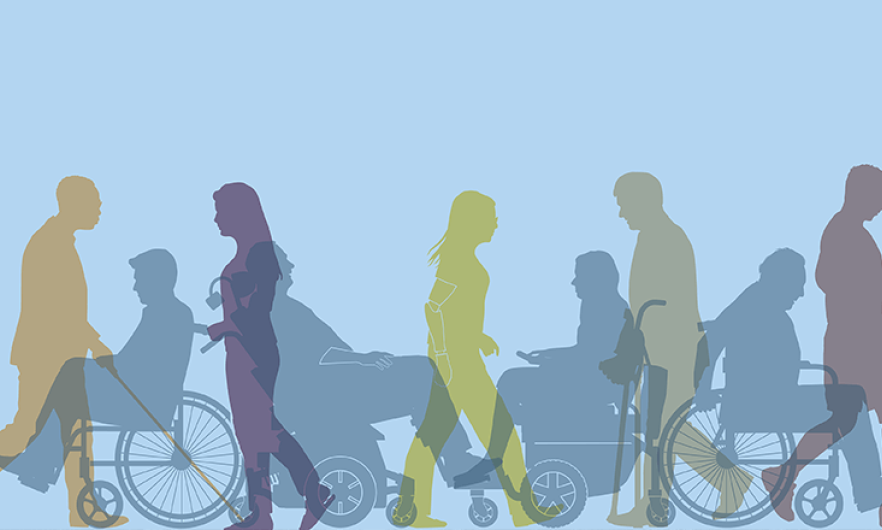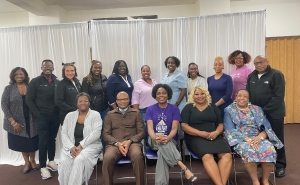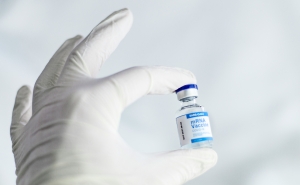COVID-19 Continues to Highlight Gaps in Accessibility for People with Disabilities
A year into the pandemic, COVID-19 continues to shine a light on long-standing health care disparities for those with disabilities.

In a Bloomberg School article published 10 months ago, Bonnielin Swenor, PhD ’13, MPH ’09, an expert on disability inclusion and access to care said, “COVID-19 has highlighted the gaps in equitable situations for people with disabilities, and that really has to change.”
Now, 10 months later and a year into the pandemic, not much has changed. “The gaps have absolutely persisted,” Swenor says.
In the beginning of the pandemic, challenges for people with disabilities included access to and accessibility of information, COVID-19 testing, social distancing, and other recommended guidelines. More gaps are being seen in accessibility now that vaccines are becoming available. For the visually impaired, it’s become nearly impossible to schedule a vaccination online because many websites are incompatible with screen readers. “It’s challenging enough for anyone, but for someone with a disability—it’s an extra barrier,” says Swenor. “If you’re lucky enough to understand the prioritization, get signed up, be called—navigating the actual vaccine location may not be possible for someone who is visually or hearing impaired.”
One reason the pandemic response hasn’t met the needs of the disabled community is that much of it is driven by data. Swenor says while some data exist from congregate care settings like group homes, this represents only a subset of people with disabilities. There’s a much larger proportion of people in the community with disabilities, and, unlike race/ethnicity, ZIP code, and other demographics, data about the presence and type of disability is not routinely collected in health care settings. “We can’t look at outcomes in this moment of the pandemic, or really at any time, to look at differences in health care safety, access, or different types of outcomes,” Swenor says.
As long as data gaps exist, it’s impossible to understand the full impact of COVID on people with disabilities, and even more challenging to shape policies to prioritize these groups.
In February, the Biden-Harris administration announced the COVID-19 Health Equity Task Force to address health inequities caused by the pandemic and to help prevent them in the future. “It’s at least a consideration of our community in that effort to start to think about the policies, the implications, the impact of COVID-19, which has differentially impacted a number of groups represented on that task force, including those with disabilities,” says Swenor. “While this Task Force is a great sign toward progress, it’s early to say what might come from that.”
To track progress at state and local levels, the Johns Hopkins Disability Health Research Center—which Swenor directs—launched the COVID-19 Vaccine Prioritization Dashboard with the Center for Dignity in Healthcare for People with Disabilities in February. Their goal is to understand how states are prioritizing the disability community in their vaccination distribution plans. Swenor’s team, with support from the American Association of People with Disabilities, is “working to compile data and synthesize it in a meaningful way that will allow for them to pull out trends and understand at a higher level the differences in prioritization for people with disabilities across states,” says Swenor.
We may be waiting a while for federal and state level policies to fill in data gaps and establish policy, but Swenor says we can all be working in the meantime to be more inclusive. As someone living with a visual impairment disability, she suggests that “whenever we’re having discussions around equity, diversity, and inclusion—be the person to ask, ‘is disability included?’ We shouldn’t wait for the person with a disability to raise their hand.”
“We all should be invested in this process,” she says, “because disability is that one minority group that anyone can join at any time.”
Grace Fernandez is a communications and marketing specialist in the Office of External Affairs at the Johns Hopkins Bloomberg School of Public Health.





